Is your basement feeling more like cold storage than the fun and functional part of your home you designed it to be? Homeowners worried about how to keep the basement warm during winter is a common refrain. If this is a concern of yours, read on to learn how to make your basement a warmer, more comfortable environment with tips from the HVAC experts at Aire Serv.
What Is the Average Basement Temperature in Winter?
Many people may be curious about the average basement temperature in winter. In the contiguous United States, the average basement temperature is about 52.7 degrees Fahrenheit (11.5 degrees Celsius). However, since different parts of the U.S. have such contrasting climates, temperatures will be lower than the national average in some states and higher in others.
Tips on How to Keep the Basement Warm in Winter
Homeowners wondering how to keep a basement warm in winter have a powerful ally: the earth itself. A basement is insulated naturally by the earth, which keeps it cool in summer and surprisingly warm in winter months. However, this natural insulation isn’t enough to make basements comfortable from late fall through the start of summer, especially in northern climates where winter temperatures can sink below freezing for extended periods.
When learning how to make a basement warmer, you’ll come across two basic strategies: 1) optimizing energy efficiency and 2) adding new heat sources. Both of these approaches are reflected in the following tips.
Insulate The Ceiling, Floor, and Walls of Your Basement
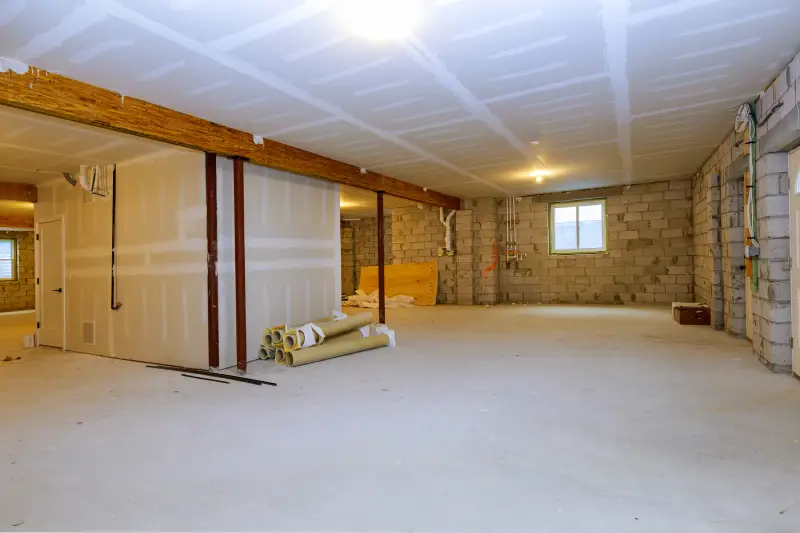
Figuring out how to keep a basement warm starts with proper construction. Your home’s foundation likely consists of stone or cinder block. In many finished basements, these walls are covered by an interior wall made of drywall or, in some cases, paneling, which provides additional insulation. If stone or cinder block walls are visible in your basement, you can create an opportunity for adding insulation by framing the basement with drywall. If your basement has finished walls, you may be able to add spray foam insulation to your basement in the space behind the drywall. The additional layer of insulation will help reduce heat transfer, keeping your basement warmer in the winter and cooler in the summer.
Install a Heat Source Such as a Wall Heater or Baseboard Heater
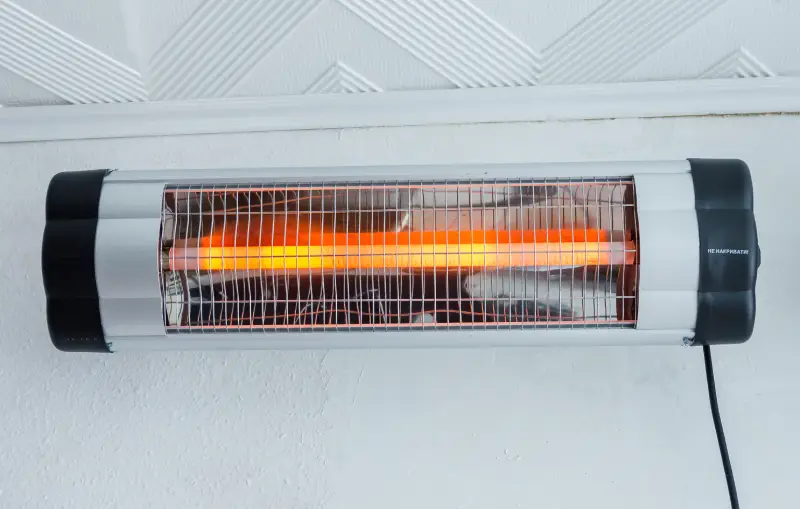
As you consider how to keep your basement warm, you may look into installing a heat source.
A wall-mounted electric heater is an option to think about. The unit is installed directly into your wall, so you won’t have to worry about knocking it over or tripping on cables.
Basement floor heating, or radiant heat, uses electrical wiring or circulating hot water beneath a floor to warm the cement. Warmth rising from the heating elements makes the cement floor a much more pleasant temperature. Installing a radiant heating system in new construction is a no-brainer, but retrofitting an existing basement is not as simple. In many cases, the cement floor must be removed and re-poured to accommodate the tubing, which can be a costly undertaking.
While there are several options available to make a basement warmer with heat sources, choosing one that is right for your situation will often come down to a matter of costs. You can utilize everything from electric baseboard heaters to a wood pellet stove. Consider these options, but evaluate each carefully, as they all have their benefits and drawbacks. Ensure that you consider the cost and safety of each as well.
Seal Any Cracks or Gaps In The Basement Walls and Foundation

There are also relatively simple DIY steps you can take to insulate your basement from the weather. Seal cracks in the interior or exterior of your home’s foundation to prevent cool air from seeping into your home or warm air from escaping. Carefully seal any openings using caulk appropriate for the building material you’re repairing.
Make sure any basement and windows are well insulated, too. Remove the trim around the window to add additional insulation, and inspect each one to make sure there are no gaps. Fill gaps with appropriate insulation.
Ventilate the Basement to Prevent Moisture and Mold Growth
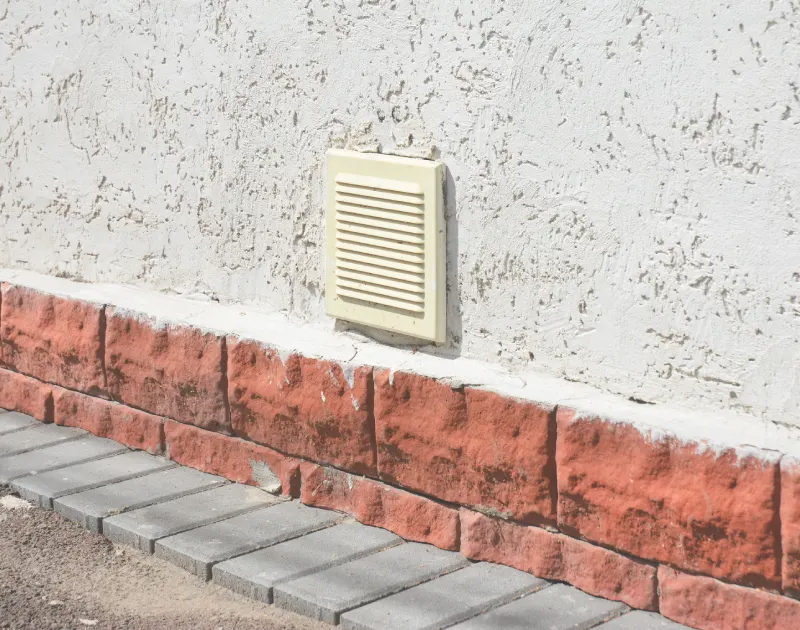
Proper ventilation is an important part of maintaining good indoor air quality, especially in a basement. Mold thrives in humid, stagnant environments, so your basement could be at risk without proper ventilation. When it's nice outside, you can easily open the basement windows to let fresh air circulate. But how do you keep your basement warm in winter and ventilate simultaneously? Adding exhaust fans or vents can help keep the air moving and prevent moisture buildup, and a dehumidifier can combat humidity. A properly designed whole-home hvac system can also help to regulate the humidity in a basement while also controlling the temperature. You can then enjoy a warm, healthy, and comfortable space that is also properly ventilated.
Use Rugs or Carpets to Insulate The Floor
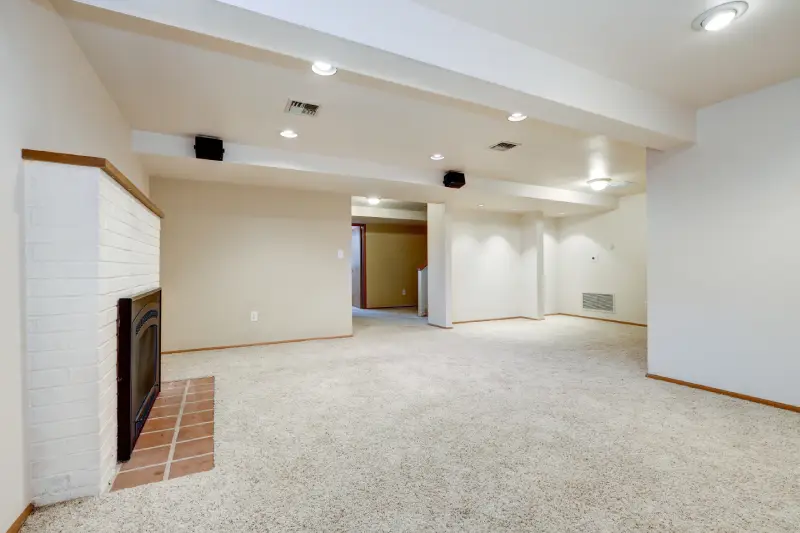
Don’t overlook flooring when considering how to keep your basement warm. Many unfinished basements have concrete slab floors. Laying throw rugs over high-traffic areas will keep your feet warm and help to insulate the floor from the cold. For additional insulation, consider installing wall-to-wall carpet or engineered flooring.
Before investing in a high-quality floor covering, consider how dry your basement stays. If your basement floods regularly, resolve that issue first before installing carpet or any other type of flooring.
How to Warm up a Basement
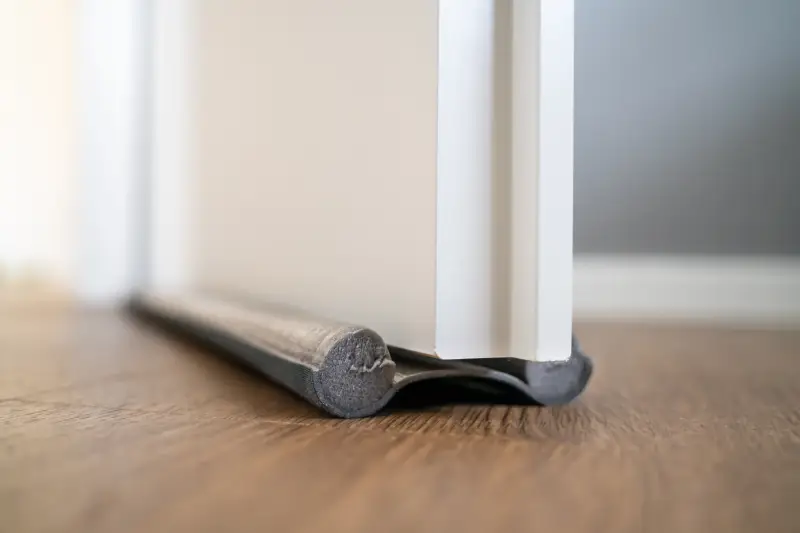
Creating a comfortable basement doesn’t have to involve a full remodel. Here are some quick fixes to keep your basement warm and cozy throughout the year:
- Draft Stoppers: One of the quickest ways to prevent cold air from entering your basement is to use draft stoppers on the doors and windows. There are several types of draft stoppers to choose from. Draft-stopping snakes are cloth tubes filled with various materials that you can place in front of any gaps at the base of a door or window. Or you may opt for a cloth stopper that slides under the door. Other options include plastic or aluminum strips that you can secure with an adhesive.
- Portable Heaters: If you’d like to figure out how to warm up a basement, you might consider a portable heater as a temporary solution. You can move a portable heater wherever you want the hot air to be focused and plug it in. Keep in mind that depending on the size of your basement and the area you’re trying to heat, it will take time before you feel warm and cozy, as these heaters take a fair amount of time to warm an area to a comfortable temperature. Portable heaters also cause your electricity bill to rise, and have the risk of falling over and are thus a fire hazard. As a temporary solution, a portable heater might work, but as a permanent solution, for most people, the cons of portable heaters outweigh the pros.
- Thermal Curtains: Switching to thermal curtains will help retain heat and prevent cold drafts. This cost-effective solution comes in many styles and colors to accent the aesthetics of your basement.
Looking for a Permanent Solution to A Warm Basement?
As you consider your options for how to keep your basement warm, call on the experts at your local Aire Serv. From basement floor heating to ductwork installation to heat pump maintenance and everything in between, we can handle all your HVAC service needs.
Existing forced-air HVAC systems may only require duct modifications or redesigning the current system to condition the basement space. In other cases, larger heating and cooling equipment or a dedicated HVAC system for the basement may be necessary.
Our uniformed service professionals arrive in our branded vehicles on time. They are equipped with all the supplies and tools needed to complete the work to our high standards. As a proud member of the Neighborly community of home service brands, all our work is backed by the Neighborly Done Right Promise™, so you know you’ll be pleased. You don’t have to deal with a cold, uncomfortable basement this winter; request an appointment with Aire Serv today.

